Have you put in countless hours making updates to your website with no increase in website traffic or user engagement? While your website may have a stunning service page and an overall professional look and feel, if it doesn’t function as a lead generation and sales tool, it won’t do much for your business goals. In this article, we will discuss reasons why people leave your website and some changes that will help decrease bounce rate and improve user engagement.
What is bounce rate?
Bounce rate is a metric measured through website analytics that is an indicator of page views and single interaction visits on your website. Bounce rate is calculated as a percentage of single interaction visits divided by the total number of visits to your website.
If a visitor comes to your website and only views a single page, that is a potential indicator that they were not engaged or they were unable to find the information they were looking for. This will contribute to a higher bounce rate percentage. This also may indicate that a visitor left your website and went to a competitor (or similar organization) looking for the information they were unable to find on your website. A high website bounce rate might also mean that there are issues on your main pages that are causing visitors to leave almost immediately.
Below are some common ranges for bounce rates:
- Excellent: 26-40%
- Average: 45-65%
- Poor: Above 70%
Industry Averages:
- B2B: 45%
- News: 55%
- E Commerce: 41%
- Tourism: 41%
We have compiled a list of twelve reasons people commonly leave your website and that may be behind a higher-than-normal bounce rate.
1. Your Website Is Not Mobile Responsive
According to a recent 2021 study, almost 50% of website traffic comes from a mobile device, and it’s been in this range since 2017 due to the uptick in smartphone usage. If you have not updated your website design to be responsive on mobile and tablet devices, chances are people are leaving your website. A website that is not responsive on a mobile device may not allow visitors to view your navigation bar properly, may require zooming in and out in order to view a page, and may have internal links that do not register properly on a mobile screen. All of these factors can be frustrating, causing visitors to leave and click on a similar website that is easier to navigate.

The example above from the Fidelis Security website shows a responsive mobile design that translates across any device to allow for easy navigation and user experience.
2. Your Website Design Is Outdated
Many businesses don’t realize the impact that website design plays on visitor engagement. You want your website to serve as an accurate, up to date reflection of your business. In fact, over 46% of website visitors often view website design as the number one criteria for determining business credibility. Outdated designs may create a lack of trust in your brand, thinking that your product and services are no longer relevant. So while it might seem like a costly investment to keep your website design current and up to date, it really is a necessary expense to continue visitor and sales growth online. A good rule of thumb is to consider a website design update every five years to remain current and keep things up to date.
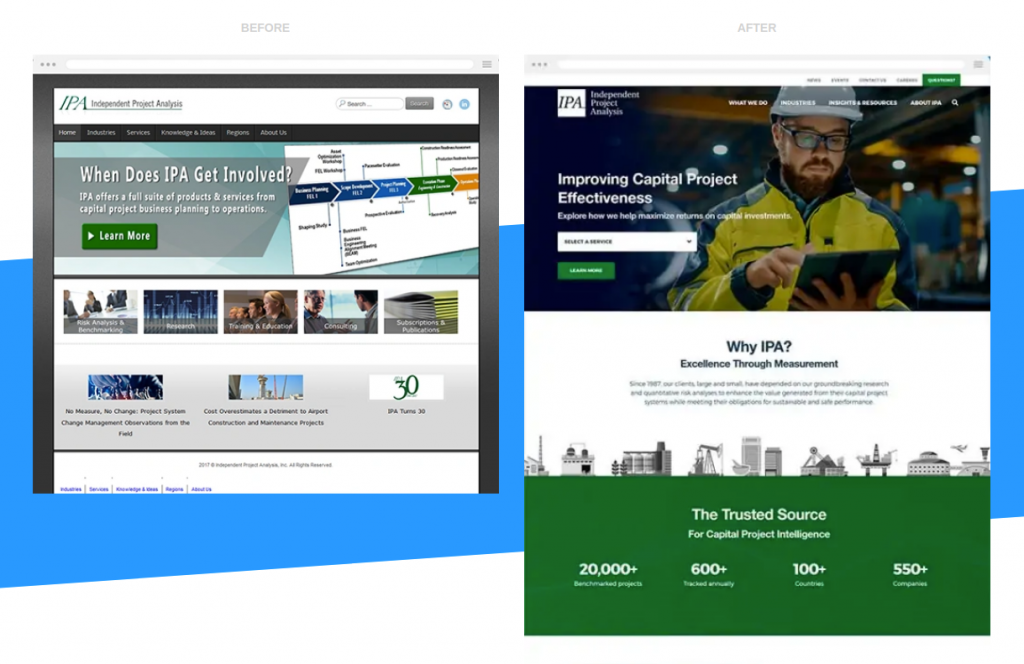
The updated website design shown above for IPA (Independent Project Analysis) features better value proposition, more organized navigational components, and updated branding for a more modern look and feel.
3. Your Website Performs Poorly
Slow loading websites can also be incredibly frustrating for online visitors. If someone comes to your website and the page takes too long to load, they might become impatient or think that the website is not functioning properly and leave. According to Google, good website load time is between 2-3 seconds, anything more than that and your user’s attention has been lost. Need help accessing your website load time? You can request a free website performance report here, which will analyze average page speed for commonly viewed pages on your website. You also may want to consider improved hosting and page speed optimization to help your website perform better.
4. You Have An Unsecured Website
Website security is another factor that can play a role in website abandonment. Visitors want to ensure their information and activity online remains protected from potential hackers. If they view your website as unsecure, they may choose to abandon it as it can be viewed as an unsafe browsing space. One of the main indicators of an unsecure website is the lack of an HTTPS certificate, which causes a “not secure” message to show next to the URL of your website. Having an HTTPs certificate installed ensures that all user data is protected, including any important financial information and browsing history. You may want to consider having some website maintenance done to ensure all areas of your website are safe and secure for browsing.
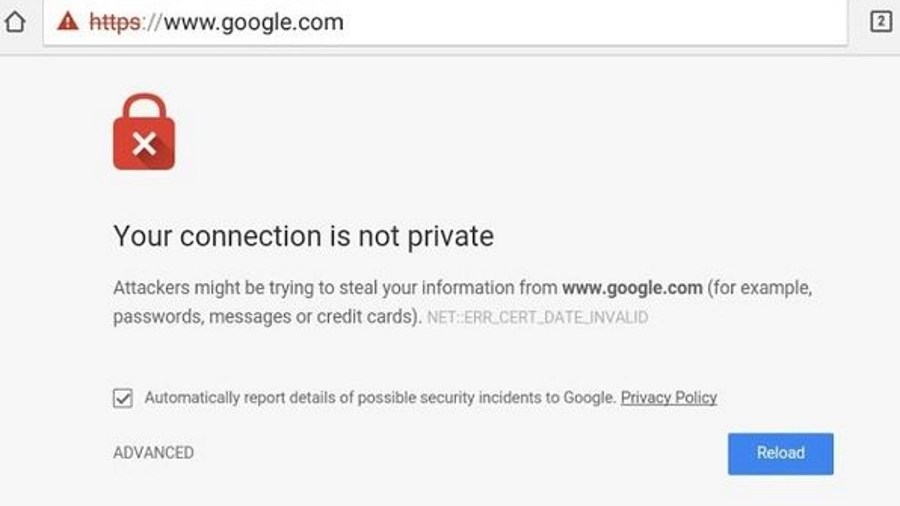
Without an HTTPS certificate, your website visitors will get a “Not secure” message at the top of their brower.
5. Your Website Content Is Difficult to Read
To create a great visitor experience, your website content needs to engage visitors and encourage them to explore further into your website. Therefore, your content should be informative, up to date, and easy to navigate. If your website is cluttered with too much information, it may cause visitors to become overwhelmed with information and frustrated because they can’t find what they are looking for. In terms of content display, keep the font simple and large enough that it is easy to read on both a desktop and mobile device.
6. Your Website Content Is Not Engaging
As mentioned above, thoughtful display of your website content is extremely important for user engagement, but the types of content offered on your website will also play a large role in improving pageviews and building trust in your brand. You want to consider offering visitors different types of content that will engage them and allow them to learn more about your business mission, vision, and values. Some website content to consider adding to your digital strategy that can help add value and create trust in your brand might include:
- a website blog (gives voice to your brand)
- case studies (provides real time examples of your services/products in use)
- customer testimonials or reviews (positive representation of your brand)
- image or video (new and interesting visual examples related to your business)
- social media integrations (allows visitors to interact with your brand)

The example above featuring the T&L’s website engages visitors by featuring a video latest news and showcases the three main elements in a preview mode to encourage more interaction and page views on the website.
7. Your Website Navigation Is Confusing
Website navigation is essentially your roadmap for guiding visitors to specific pages, so you need to consider whether or not your navigation is conducive to this goal. Organized navigation helps create a more aesthetic design and allows visitors to find the content they are looking for quickly. If your website navigation is overcomplicated or cluttered, you run the risk of confusing your visitors and causing them to leave in favor of a more simple website that is easier to navigate. You may want to consider updating your website design to include a navigational system that is simple and user friendly.

The website navigation for the IPA website allows visitors to easily navigate to different types of content through a clear and concise navigational heading.
8. Your Website Lacks Call to Action Areas (CTAs)
Website visitors sometimes need to be guided by your business to move them through the sales process, which can be done through website optimization and call to action areas. If your website lacks CTAs, your visitors may just leave your website after a single pageview because they were not encouraged to interact with any particular element on the site. A call to action can be defined as a specific prompt that compels visitors to take some sort of action on your website. This could include prompts such as “subscribe to our newsletter,” “request a demo,” or “buy now.” Calls to action should be intended to collect visitor information and move a visitor further through the sales funnel. Having important visitor information is also key in bringing visitors back to your website, such as through an email marketing or newsletter campaign.

The Lutheran World Relief Website features a few call to action areas on the website. Upon entering, visitors are encouraged to interact through prompts for engaging with content, getting involved with the organization, and making donations.
9. Your Product or Service Page Is Unclear
Besides your website’s homepage, the second most important page is your product or service page on your website. If a visitor can’t connect the relevance of your product or services to their life, then they likely will not purchase from your website and leave. Therefore, it is important to sell benefits, not just features on these pages of your website. Explain why your business is beneficial to them to create value for your brand. You may also want to consider inclusion of case studies and testimonials within your services pages to provide real time success stories of working with your business that your visitors can potentially relate to.
10. Your Website Lacks Personality
Your website should incorporate a level of personality that your visitors can identify with or you run the risk of them leaving your website. This personality should be reflected within your website content, structure, branding, and design. To create a relatable online personality, consider different buyer personas that are likely to purchase from you. For example, if you are looking to target a mom with your cooking supply business, maybe provide free recipes using your products that require minimal prep and cook time for someone with a busy schedule. Incorporating content that takes this buyer persona into consideration will help someone connect why your product might be useful or relevant for them and help them engage with your website longer.
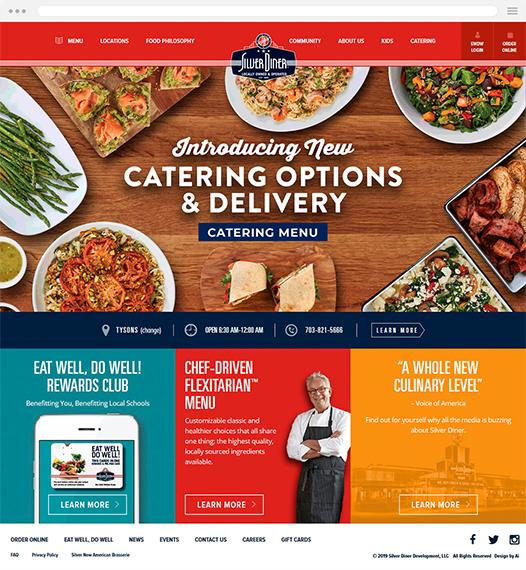
A Mobile Dining Experience old
The updated Silver Diner website features bold colors, consistent branding, and engaging content by featuring their new healthy menu options and online ordering system.
11. Your Website Has Too Much Online Advertising
While advertising can be a great online revenue generator, too much of it can be distracting and cause visitors to leave your website. If your online advertising is overpowering the actual content on your website, you might actually be missing out on potential sales and getting the message of your brand to them. Instead, consider limiting the number of ads on key areas of your website in order to better establish trust in your brand through your messaging and online content.
12. Your Website Homepage Is Confusing
One of the biggest contributors to website bounce rate is the homepage. If your website homepage does not engage visitors and tell your story, you run the risk of someone leaving right away. The homepage should include many of the recommendations listed above to keep them engaged and inclined to further explore your website Some common issues on a website homepage include:
- Too much content that might be difficult to read
- An outdated homepage design
- A lack of engaging content that creates value perception and trust in your brand
- No call to action areas
- Confusing or overcomplicated navigation
- Poor performance and an unsecure website
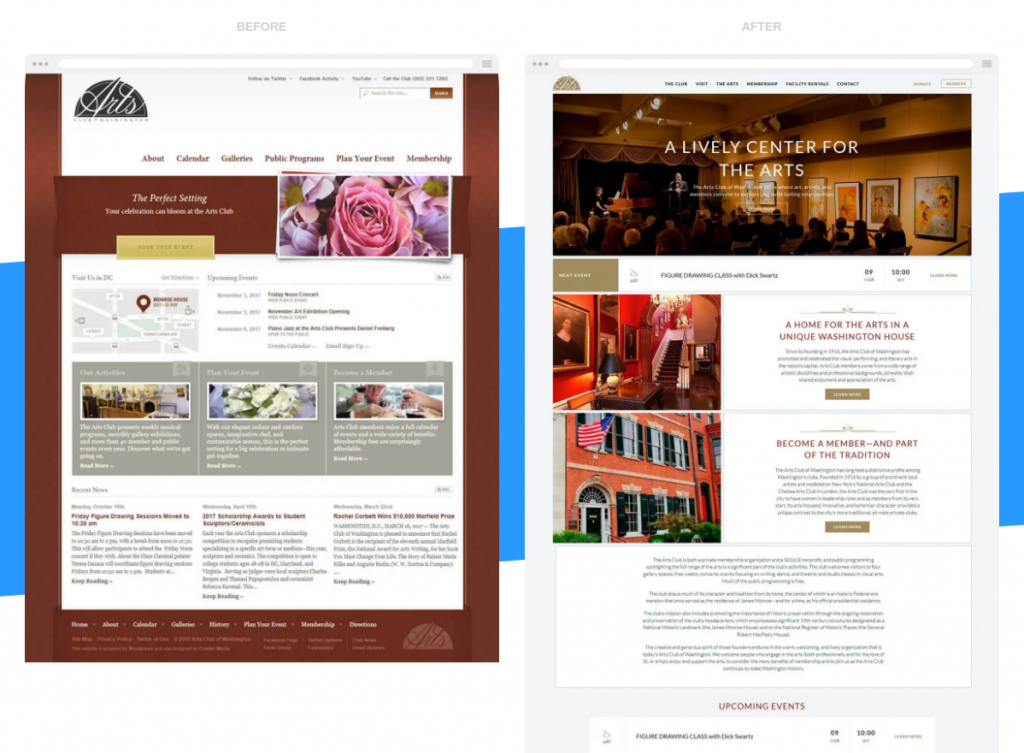
The old Arts Club of Washington website featured a homepage that was a bit text heavy and cluttered. The updated website design showcases great imagery of the location and gives a brief overview of membership benefits and upcoming events.
13. There is no one to chat with
Incorporating an online chat functionality is an effective tool to allow visitors to communicate directly and answer any questions they may have early on without having to wait for a response from a contact form or phone message.
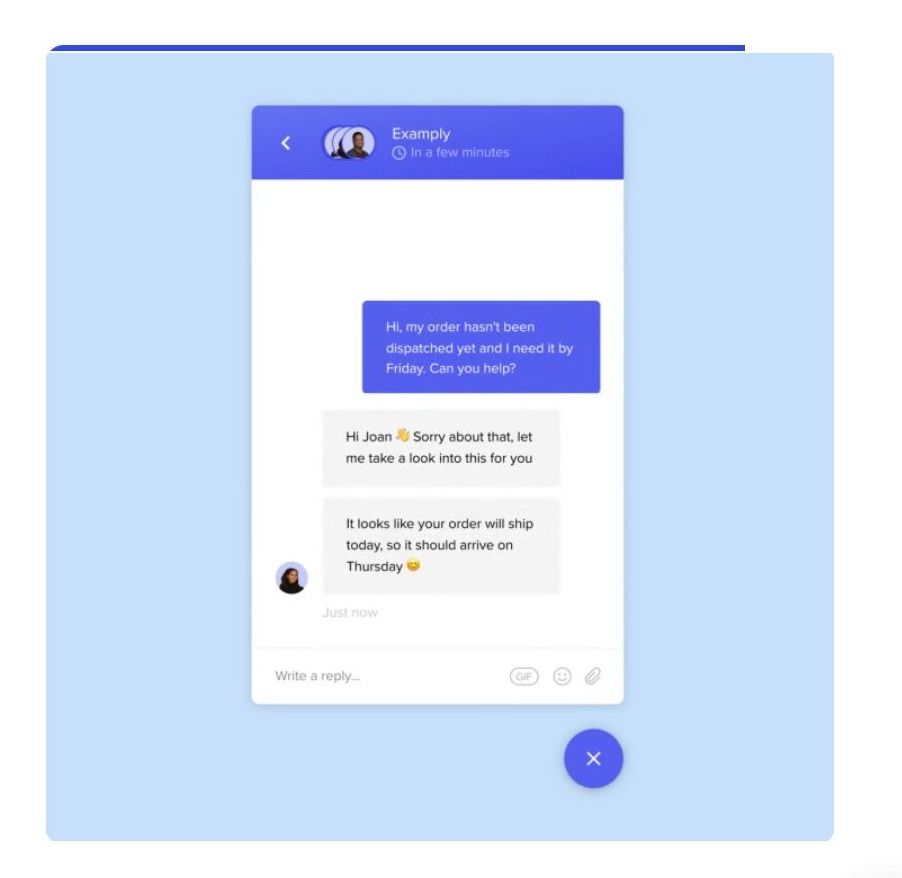
An online chat function also helps improve the level of customer service your business can provide by allowing for a faster response rate to questions, concerns or comments visitors may have about products or services.
By addressing the issues mentioned above you are likely to see improvements in the time visitors spend on your website, a lower bounce rate, and better sales and online growth long term. Some of these improvements to your website include technical areas such as security and performance, as well as updates to visual elements such as design, content display, navigational updates and integration of call to action areas.
Website Design and Development Assistance
Need help with website optimization, website development, and design? Alliance Interactive is a full service Washington, DC based digital agency helping online clients improve visitor engagement and online growth through digital marketing, website development, design, and optimization strategy and implementation. For more information and a free website evaluation and proposal, you can request more information.